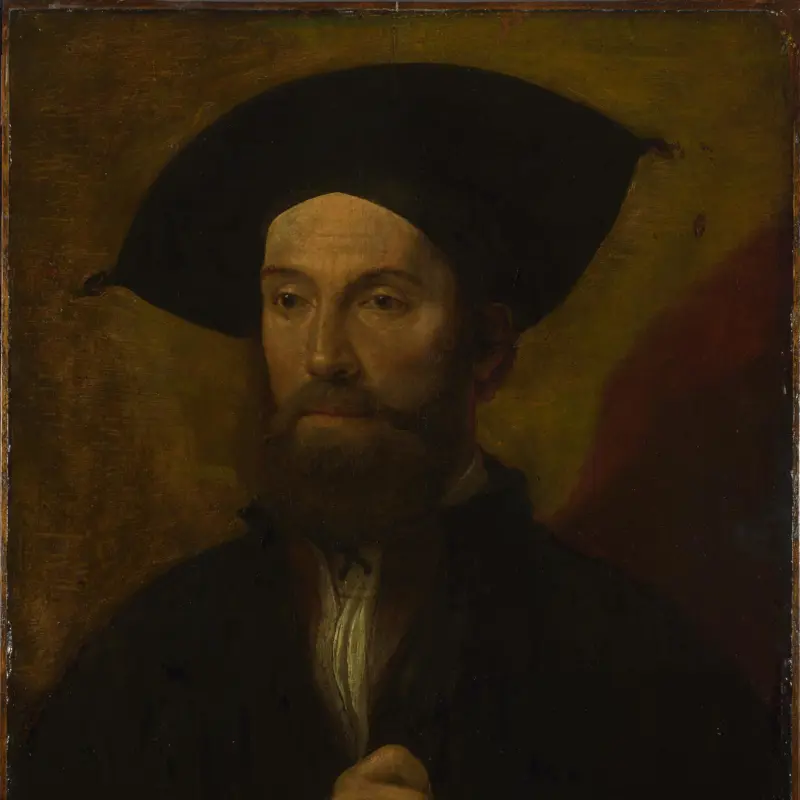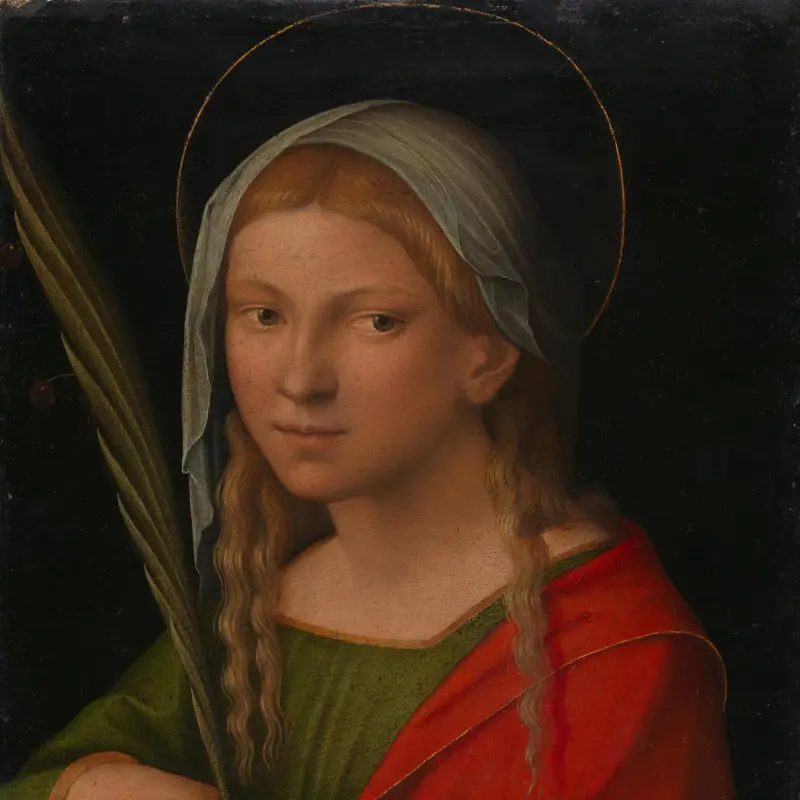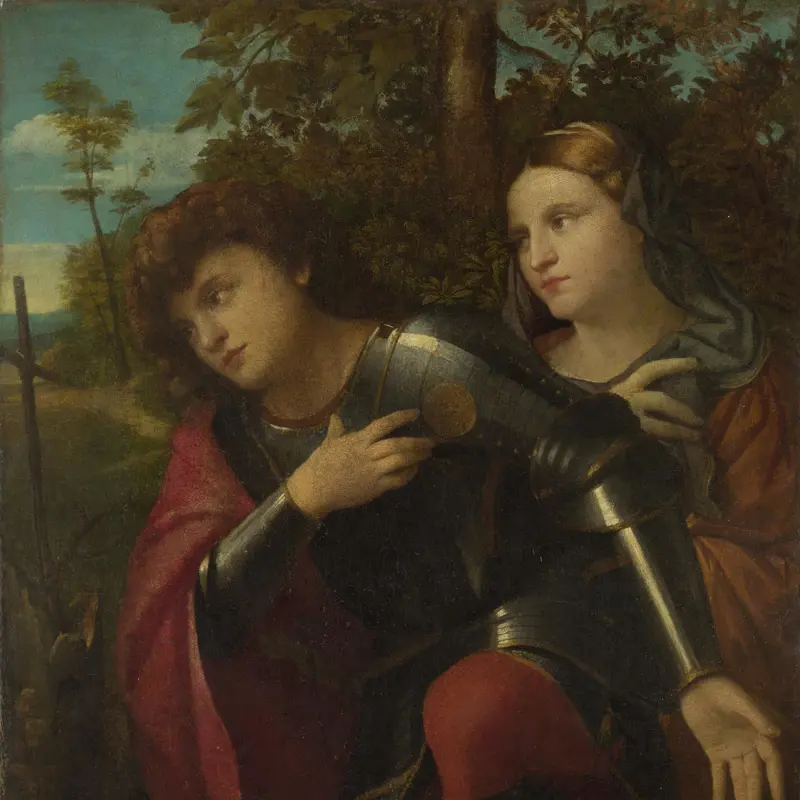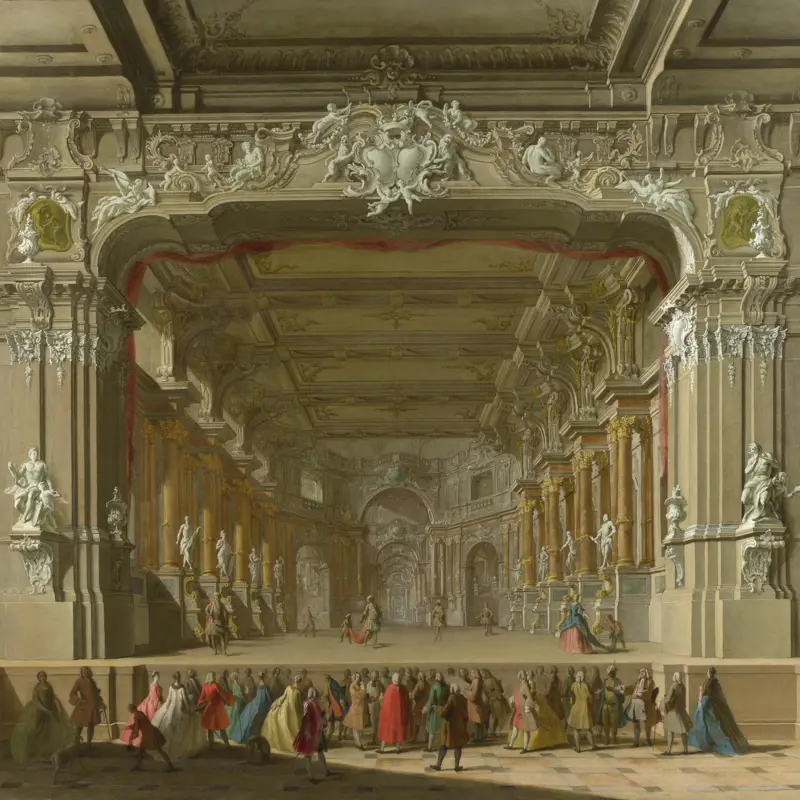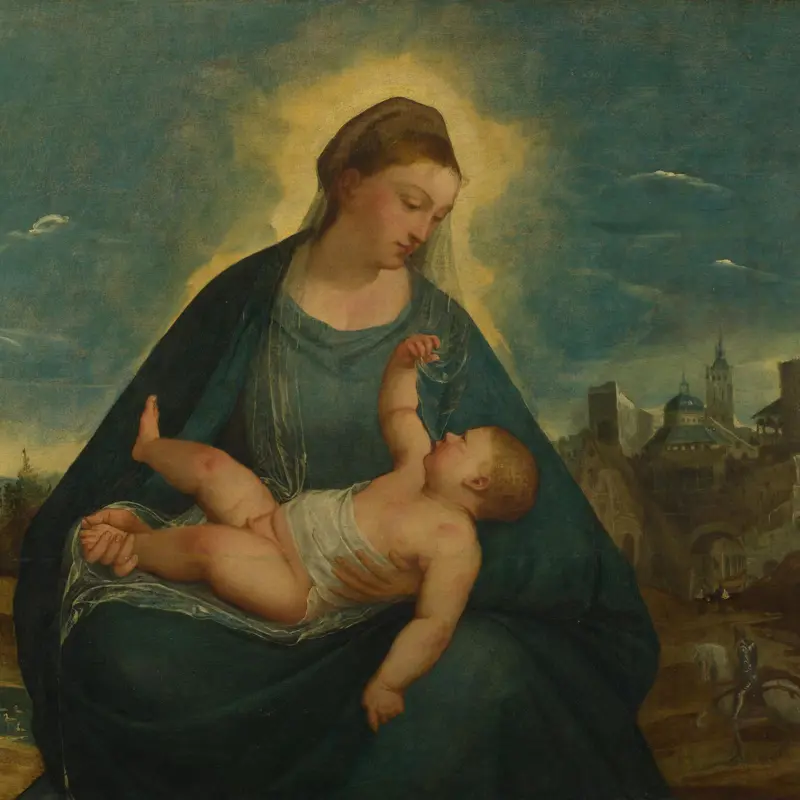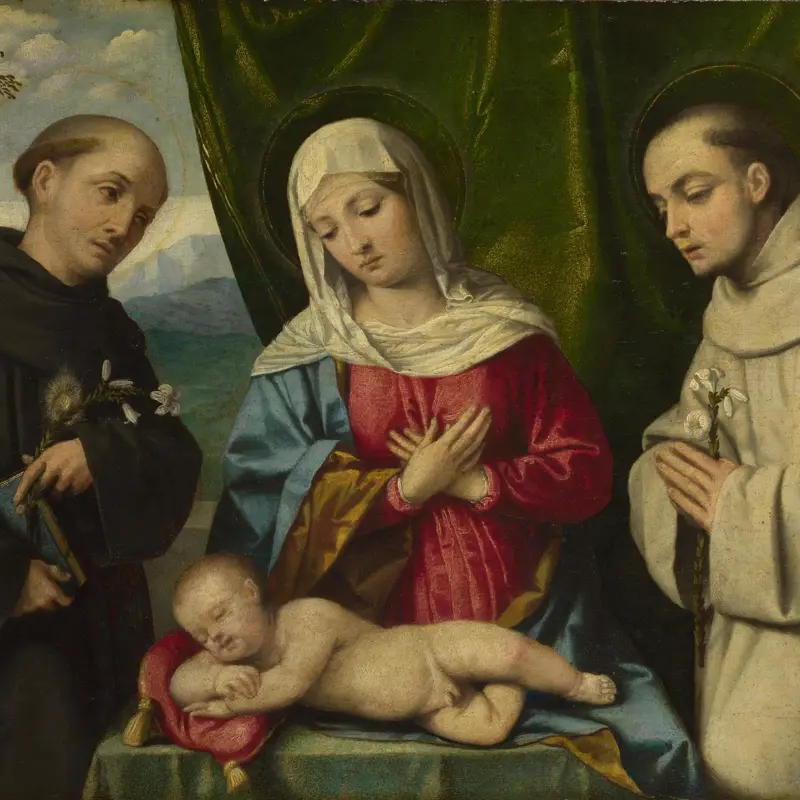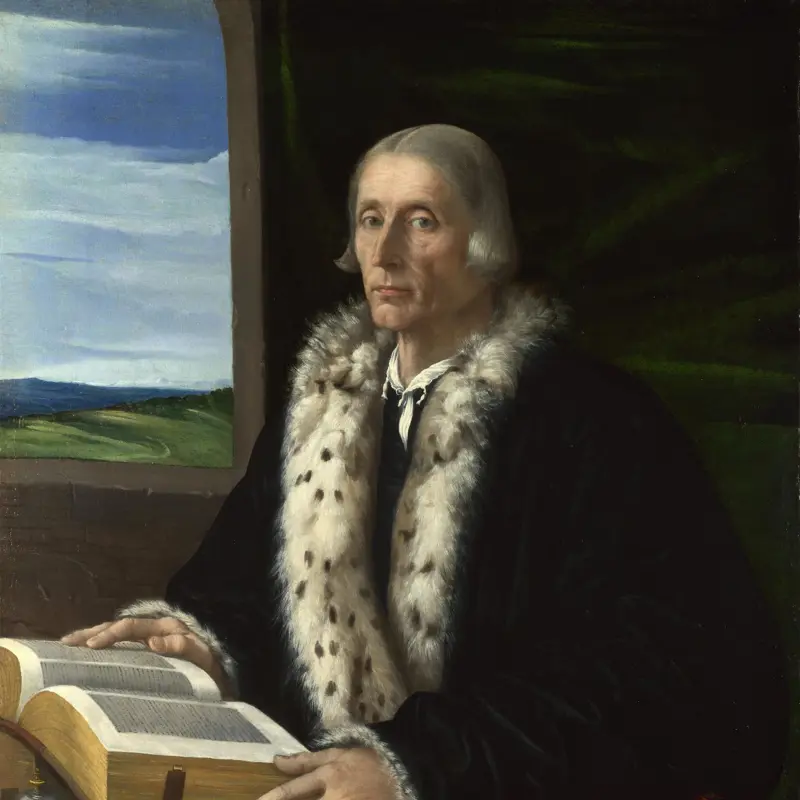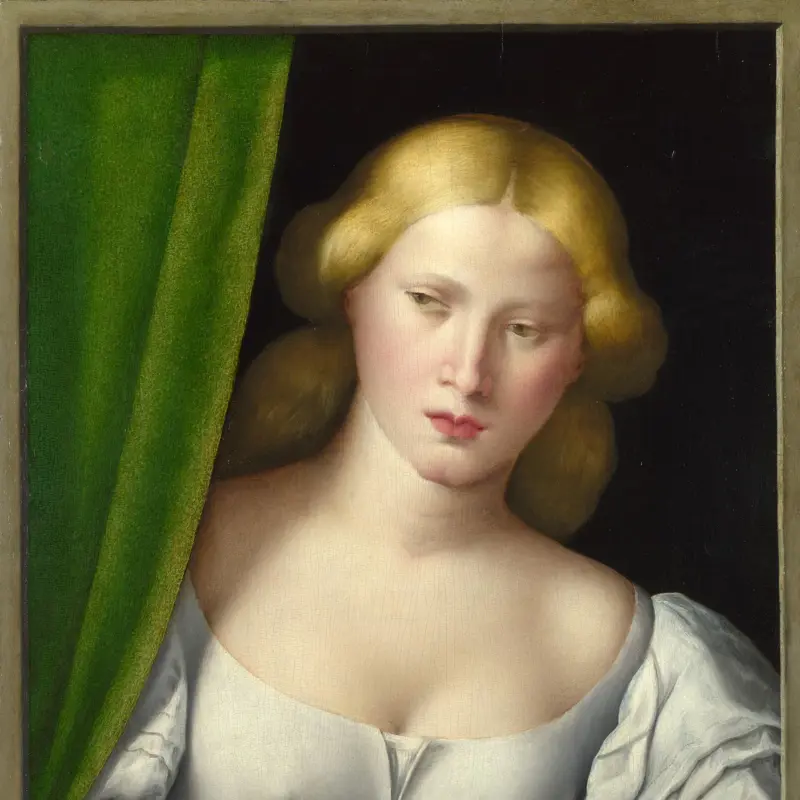Italian, North, 'Saint Hugh', about 1525-1600
About the work
Overview
The saint in this painting carries a bishop’s crosier and wears the white habit of the Carthusian Order. The Carthusians were an enclosed Catholic religious order of monks and nuns founded by Bruno of Cologne in 1084. Bruno was called to Rome by Pope Urban II, and while there founded a new hermitage in Calabria in southern Italy.
The way that the crosier has been cropped suggests that the panel may have been cut down from a larger painting. The inscription ‘S~ UGO’ (Italian for Saint Hugh) may be a later addition and it is not certain whether Saint Hugh of Grenoble or Saint Hugh of Lincoln is represented. Both of these saints were Carthusians. However, the white habit may have been underpainted only and left unfinished.
We do not know who painted this picture. It has previously been attributed to Mansueti and to Lodovico da Parma, who were both working in the sixteenth century, but neither identification is convincing.
Key facts
Details
- Full title
- Saint Hugh
- Artist
- Italian, North
- Date made
- About 1525-1600
- Medium and support
- Oil on wood
- Dimensions
- 41.3 × 32 cm
- Acquisition credit
- Bequeathed by Lt.-General Sir William George Moore, 1862
- Inventory number
- NG692
- Location
- Not on display
- Collection
- Main Collection
Provenance
Additional information
Text extracted from the ‘Provenance’ section of the catalogue entry in Cecil Gould, ‘National Gallery Catalogues: The Sixteenth Century Italian Schools’, London 1987; for further information, see the full catalogue entry.
Bibliography
-
1962Gould, Cecil, National Gallery Catalogues: The Sixteenth Century Italian Schools (excluding the Venetian), London 1962
-
1987Gould, Cecil, National Gallery Catalogues: The Sixteenth Century Italian Schools, London 1987
-
2001
C. Baker and T. Henry, The National Gallery: Complete Illustrated Catalogue, London 2001
About this record
If you know more about this work or have spotted an error, please contact us. Please note that exhibition histories are listed from 2009 onwards. Bibliographies may not be complete; more comprehensive information is available in the National Gallery Library.




